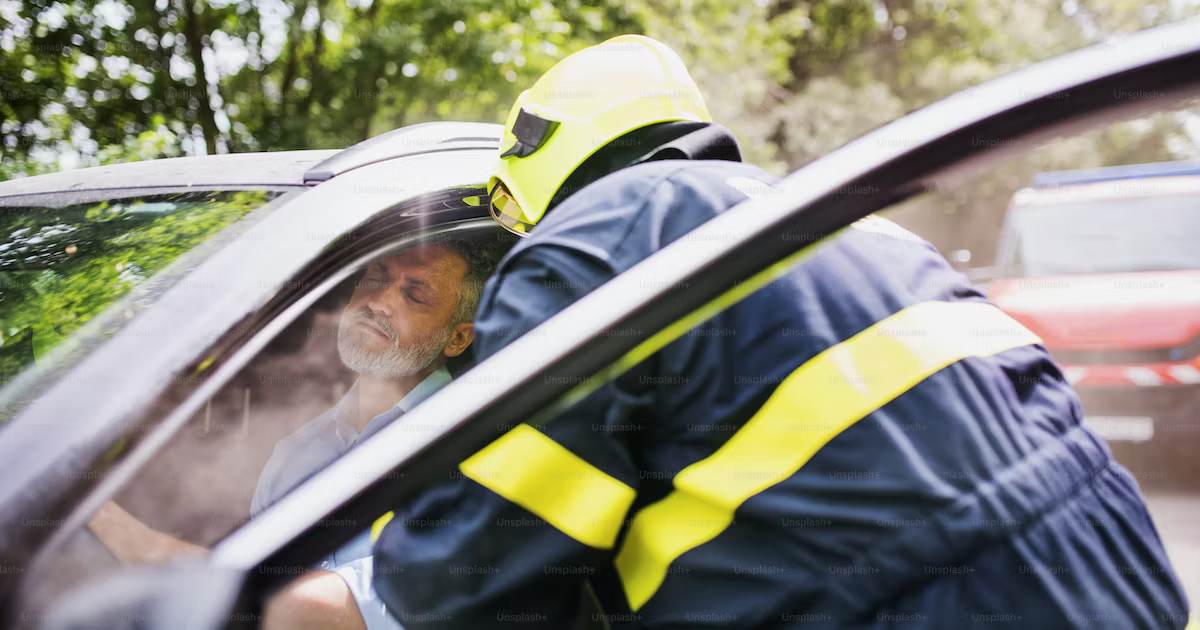Dealing with a car accident can be a daunting task. The turmoil and confusion following such incidents often make it challenging to remember what measures to take to protect oneself legally and financially. This comprehensive guide serves as a roadmap to help you navigate through the post-accident process effectively.
1. Immediate Action: Assessing Physical State
Primary Action: Check Your Health
Your health should always be your top priority. In the immediate aftermath of an accident, check yourself for any injuries. If you are seriously hurt, try not to move and wait for medical personnel to arrive.
Secondary Action: Verify the Well-being of Co-passengers
Once you have ascertained your condition, check on your passengers. If anyone is injured, dial 911 or ask a bystander to do so.
2. Ensuring Safety Post-Accident
Primary Action: Relocate to a Safe Location
If you and your passengers are not severely injured, attempt to move to a safer spot. This could be the sidewalk or the side of the road. If your vehicle is causing a traffic obstruction and is safe to drive, move it to the side of the road. If not, abandon the vehicle and ensure your personal safety.
3. Contacting Authorities
Primary Action: Dial 911
Regardless of the severity of the accident, it is crucial to inform the police. They will document the scene and generate an accident report, which can be important when dealing with insurance claims.
Secondary Action: Self-report at Nearest Police Station
In case the police cannot arrive at the scene of the accident, you can report the incident at the nearest police station. Your insurer may request a copy of this report during the claims process. At this point it would be a great idea to contact a law firm like Younce Vtipil Baznik & Banks, which specializes in car accident cases to protect your rights.
4. While Waiting for Help
Primary Action: Take Preventive Measures
While waiting for help to arrive, turn off your engine and activate your hazard lights. If you have road flares in your emergency car kit, use them to signal other vehicles to slow down.
Secondary Action: Beware of Unwanted Help
Be wary of unsolicited tow trucks that may stop to offer help. They might be a part of a scam intending to exploit vulnerable accident victims.
5. Information Exchange
Primary Action: Exchange Key Information
After confirming everyone’s safety, exchange the following critical information with the other driver:
- Full contact details
- Insurance company number
- Driver’s license and plate number
- Vehicle type and model
- Location where accident took place
Avoid discussing fault at this stage as the insurance adjuster will determine this based on an inspection and supporting documents.
6. Documenting the Car Accident
Primary Action: Record the Details
To safeguard your interests, take the following steps:
- Identify the responding officers and note their names and badge numbers
- Request a copy of the accident report
- Take pictures of your vehicle from different angles to document the damage
- Write down the details of all parties involved, including all the passengers
- Speak to witnesses, if any, and record their names and contact information
7. Contacting Your Insurance Provider
Contact your insurance provider as soon as possible. They can guide you regarding the information they need to process your claim and what to expect during the claims process.
8. Post-Accident Procedures
Each state has specific requirements for reporting accidents to the Department of Motor Vehicles. Factors like damage severity, injury occurrence, and repair costs may dictate whether you need to report the incident or not. Consider looking into post-collision repair services from L&D Solutions as well, especially if the crash was relatively minor. This can get your car in working condition again at an affordable price, instead of buying a new vehicle.
9. Post-Accident FAQs
Can I purchase insurance after an accident to cover repair costs?
No, you cannot buy insurance post-accident to cover the repair costs.
What happens if the accident is my fault?
Even if you think the accident is your fault, the legal liability will be determined after the insurance adjuster’s investigation.
What if the accident is not my fault?
In some states, if the other driver is found at fault, their insurance company may have to cover repairs. However, in no-fault states, both insurers would be liable regardless of fault.
How are repair costs determined?
Insurance companies determine the repair costs. Depending on your coverage, you may be reimbursed for these costs after you pay a deductible.
10. Dealing with Minor Accidents
In case of minor accidents with no injuries and minimal damage, you may choose not to file a claim or report the accident to the police. However, it’s recommended to exchange information and inform your insurance company about the incident.
11. Understanding the Impact on Insurance Rates
If you were at fault for the accident, your rates could go up when your policy renews. Each insurance company has different policies regarding rate increases after accidents.
12. Accident Forgiveness
Some insurance companies offer accident forgiveness policies where your rate won’t increase after your first at-fault accident. It’s advisable to check with your insurer about such offerings.
Conclusion
Car accidents can be stressful, but having a clear understanding of what to do in such situations can alleviate some of the panic and confusion. Remember, your safety comes first. So, ensure you are out of harm’s way before proceeding with the above steps.

